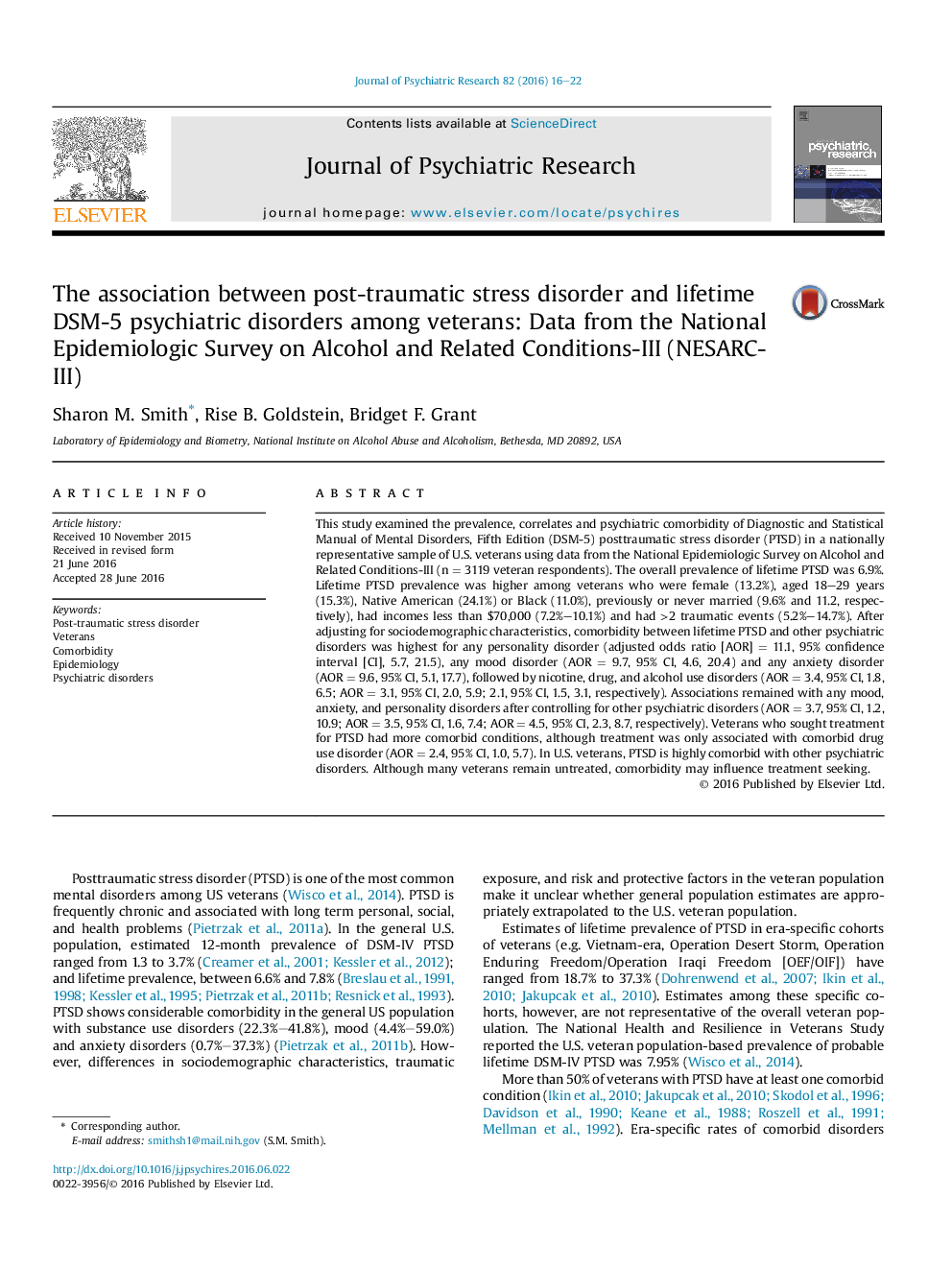| Article ID | Journal | Published Year | Pages | File Type |
|---|---|---|---|---|
| 6799899 | Journal of Psychiatric Research | 2016 | 7 Pages |
Abstract
This study examined the prevalence, correlates and psychiatric comorbidity of Diagnostic and Statistical Manual of Mental Disorders, Fifth Edition (DSM-5) posttraumatic stress disorder (PTSD) in a nationally representative sample of U.S. veterans using data from the National Epidemiologic Survey on Alcohol and Related Conditions-III (n = 3119 veteran respondents). The overall prevalence of lifetime PTSD was 6.9%. Lifetime PTSD prevalence was higher among veterans who were female (13.2%), aged 18-29 years (15.3%), Native American (24.1%) or Black (11.0%), previously or never married (9.6% and 11.2, respectively), had incomes less than $70,000 (7.2%-10.1%) and had >2 traumatic events (5.2%-14.7%). After adjusting for sociodemographic characteristics, comorbidity between lifetime PTSD and other psychiatric disorders was highest for any personality disorder (adjusted odds ratio [AOR] = 11.1, 95% confidence interval [CI], 5.7, 21.5), any mood disorder (AOR = 9.7, 95% CI, 4.6, 20.4) and any anxiety disorder (AOR = 9.6, 95% CI, 5.1, 17.7), followed by nicotine, drug, and alcohol use disorders (AOR = 3.4, 95% CI, 1.8, 6.5; AOR = 3.1, 95% CI, 2.0, 5.9; 2.1, 95% CI, 1.5, 3.1, respectively). Associations remained with any mood, anxiety, and personality disorders after controlling for other psychiatric disorders (AOR = 3.7, 95% CI, 1.2, 10.9; AOR = 3.5, 95% CI, 1.6, 7.4; AOR = 4.5, 95% CI, 2.3, 8.7, respectively). Veterans who sought treatment for PTSD had more comorbid conditions, although treatment was only associated with comorbid drug use disorder (AOR = 2.4, 95% CI, 1.0, 5.7). In U.S. veterans, PTSD is highly comorbid with other psychiatric disorders. Although many veterans remain untreated, comorbidity may influence treatment seeking.
Related Topics
Life Sciences
Neuroscience
Biological Psychiatry
Authors
Sharon M. Smith, Rise B. Goldstein, Bridget F. Grant,
